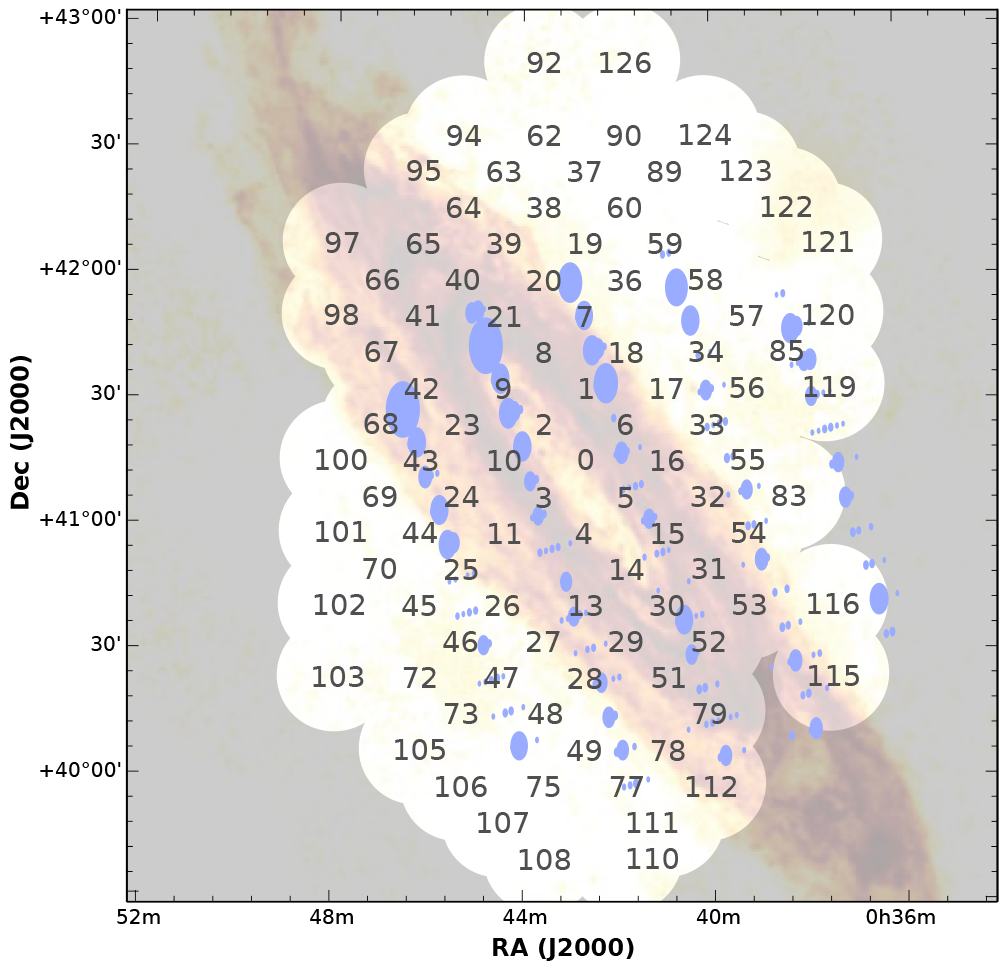Daily Image
02-12-2019A LOFAR search for pulsars in M31
| Submitter: | Joeri van Leeuwen |
| Description: | Today appeared on arXivour search for low-frequency single and period pulses from the Andromeda Galaxy. We know that such bright, short radio bursts are emitted by sources at a large range of distances: from the nearby Crab pulsar to remote Fast Radio Bursts (FRBs). FRBs are likely to originate from distant neutron stars, but our knowledge of the radio pulsar population has been limited to the Galaxy and the Magellanic Clouds. So, in an attempt to increase our understanding of extragalactic pulsar populations, and its giant-pulse emission, we employed the LOFAR to search the Andromeda Galaxy (M31) for radio bursts emitted by young, Crab-like pulsars. For the same reasons, other nearby galaxies were previously searched for fast transients and pulsars (see Mikhailov & van Leeuwen 2016 and this Daily Image). None were successful; but for M31, Rubio-Herrera et al. (2013) carried out a Westerbork Synthesis Radio Telescope (WSRT) search at 328 MHz, and discovered six bursts at the same dispersion measure (DM) of 54.7 pc/cc. Following it up this source was a major motivation for the work presented in this paper. In the figure, we show the union of our 2011 LOFAR beam pattern; with the localization distribution of the DM=54.7 pc/cc candidate from Eduardo Rubio-Herrera and WSRT team in blue. The overall outline and beam numbers over the 2011 observation are shown. As observations were taken around transit, the beams are close to circular. The size of the blue ellipses indicates the S/N of the DM=54.7 pc/cc candidate single-pulse detection in the WSRT subbeam at that location. In the background, the Hi peak brightness map at 60 arcsec and 6 km/s resolution, as observed with WSRT by Robert Braun et al. in 2009. A number of candidate signals were detected from M31 but none proved persistent. FRBs are sometimes thought of as Crab-like pulsars with exceedingly bright giant pulses – given our sensitivity, we can rule out that M31 hosts pulsars more than an order of magnitude brighter than the Crab pulsar, assuming their pulse scattering follows that of the known FRBs. |
| Copyright: | JvL |
| Tweet |  |
